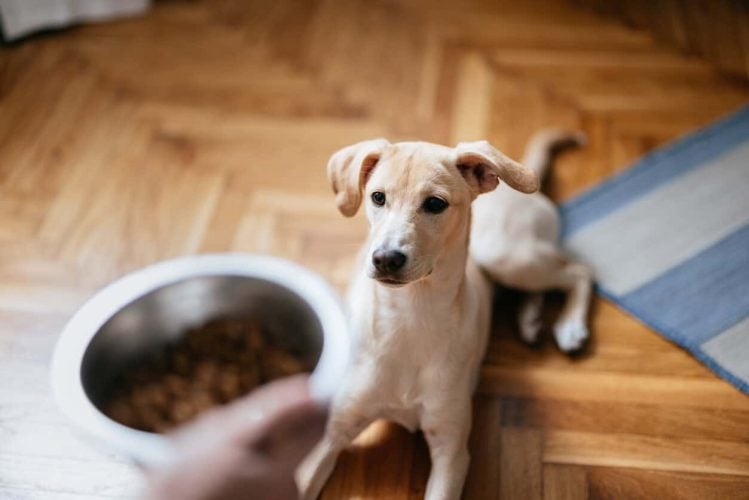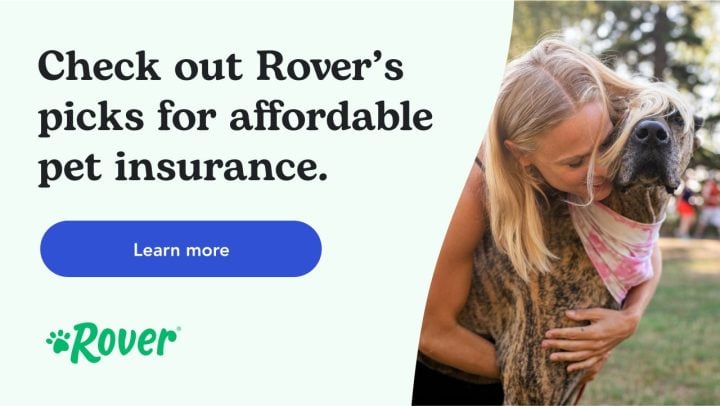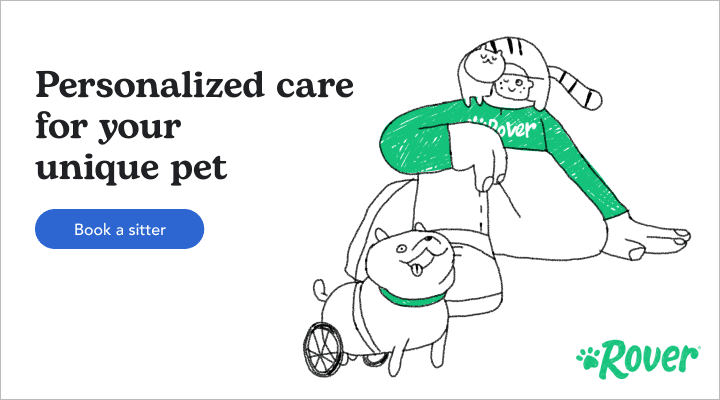- Not a substitute for professional veterinary help.
With plenty of dog foods on the market, you have plenty of options for foods made with high-quality ingredients and limited fillers. But dogs can still develop an allergy or intolerance to many of these ingredients.
While some environmental allergies can cause skin and gastrointestinal problems in dogs, certain foods can also cause allergies, says Dr. Sabrina Kong, DVM, a veterinary consultant at We Love Doodles.
Depending on your dog’s symptoms, they may have either an intolerance or allergy to one or more ingredients in their diet.
Read on to learn seven common allergens in dog food and how to tell if your pup’s food is causing an allergic reaction.
Is It An Allergy Or An Intolerance?
First off, it’s important to know the difference between a food intolerance and a true food allergy.
A food intolerance means your dog has difficulty digesting a certain ingredient, like dairy. It doesn’t involve an immune system response.
A food allergy, on the other hand, means your dog’s immune system mistakenly identifies a particular food ingredient (usually the protein source) as harmful. Their body then responds by creating defensive antibodies to fight the invading enemy (the ingredient).
“Food allergies in dogs are typically managed rather than cured,” Dr. Kong says. “Once identified, the best approach is to avoid the allergen. This often involves feeding hypoallergenic or limited ingredient diets. Regular check-ups and monitoring are essential to make sure the allergen stays out of the dog’s diet.
She says it’s common for dogs with one food allergy to develop sensitivities to other ingredients over time. This means you have to pay close attention to any new symptoms and adjust their diet accordingly.
What Are The Major Signs Of A Food Allergy?
If your dog has a food allergy, you may notice:
- Sneezing
- Frequent scratching due to itchiness, especially on their paws
- Hot spots (skin infections resulting from excessive scratching)
- Skin rashes
- Scaly or oily skin
- Pigmented skin
- Leathery skin texture
- Eye discharge
- Red eyes
- Vomiting and diarrhea
- Hair loss
- Ear infections
- Secondary yeast or bacterial infections (pyoderma) of the skin or ears
7 Most Common Food Allergies In Dogs
Dogs can develop an allergy to any number of foods, but the most common triggers are:
- Beef: Feeding your dog a single food for years increases their chances of developing an intolerance or allergy to one or more ingredients. Beef is one of the most common ingredients in dog food, which may be the reason it’s the most common food allergen.
- Dairy: Some dogs have problems digesting lactose. This is an intolerance, rather than an actual allergy. Lactose intolerance causes gas, diarrhea, and vomiting. A true dairy allergy can causes these symptoms too, but allergies also often cause skin itchiness and related symptoms.
- Wheat: It’s much more common for dogs to develop allergies to meat than grains, but some dogs do have an allergic reaction to wheat. If your dog has a wheat allergy, talk to your vet about grain-free dog food.
- Eggs: An egg allergy means that your dog’s immune system overreacts to the proteins present in the egg yolk. Some dog foods contain eggs, but many don’t, so reading labels carefully can help you avoid them!
- Chicken: Like beef, chicken is a very common ingredient in dog foods. Some dogs who exclusively eat chicken-based dog foods may eventually develop an intolerance or allergy.
- Lamb: Lamb can be a good option for dogs allergic to beef or chicken, but it can also trigger an intolerance or allergy for some dogs.
- Soy: Some older research suggests soy can cause various health issues as well as allergies in dogs. A few possible concerns include reproductive and growth problems, thyroid problems, and liver disease. That said, experts have yet to come to any conclusions.
Pork, rabbit, and fish can also cause allergies, though less commonly than the seven ingredients above.
Are Some Breeds More Likely To Have Food Allergies?
Any dog can develop a food allergy, but Dr. Kong says certain breeds seem more prone to them.
“For instance, Labrador Retrievers, Cocker Spaniels, and German Shepherds are among the breeds I often see with food allergies,” she says. “However, it’s not solely a breed-specific issue.”
Dr. Kong explains that genetics play a significant role in whether a dog’s more likely to develop allergies.
If a dog’s immediate family, like their parents or siblings, have food allergies, the dog has more risk no matter what breed they are. In short, a dog’s genetic lineage plays an equal—if not greater—role in whether they develop a food allergy, she says.
How to Identify Your Dog’s Food Allergy
If you suspect your dog could have a food allergy, the first thing to do is talk to your vet about how to pinpoint the allergen. They can offer more guidance and help make a diagnosis, which may include skin and blood allergy tests or an elimination diet.
This process involves eliminating potential trigger ingredients, like beef, from your dog’s diet for six to eight weeks by switching to a food without that ingredient. If your dog doesn’t show any signs of allergies on the new food, congratulations! You’ve figured out the allergy. If not, you’ll repeat the process until you find the trigger.
How To Treat Food Allergies In Dogs
Treating your dog’s food allergy mainly involves avoiding the allergen. If they’re only allergic to one ingredient, you may be able to solve the problem by choosing another food.
But if your dog has multiple food allergies, your vet may recommend a prescription diet. You can also try a raw food or limited ingredient diet.
You can also search for dog foods that use hydrolyzed proteins. This is a fancy way of saying the protein is broken down molecularly so nothing of the potential allergen remains.
And if you prefer to make your own dog food, you can also try plenty of homemade dog food hacks and healthy dog food recipes. Just talk to your vet first—it’s important to get nutritional guidance when preparing homemade food for pets.




